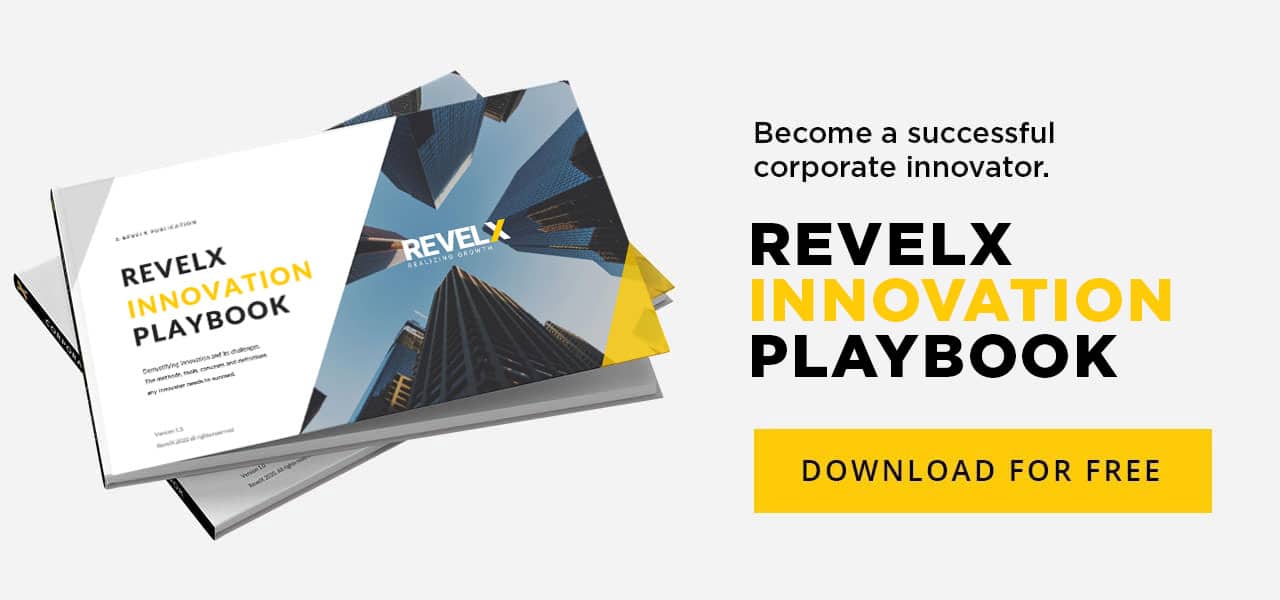The innovation process starts with the identification and assessment of the innovation opportunities. Structured and high-quality ideation is a challenge for many corporates. We recognize the following ideation challenges:
- Spotting and creating innovation opportunities
- Balancing the long- and short-term perspective
- Selecting the most promising innovations
The basis for ideation is the organization’s growth strategy. Where do we want to play? How are we going to win? The process of ideation should culminate into a balanced innovation portfolio for the business. This portfolio covers both the short and long term and serves as input for the Growth Board. Ideation makes use of amongst others design thinking principles and takes the customer as a central vantage point.
3x3 Innovation Matrix
Breakthrough innovations often combine several types in the 3×3 Innovation Matrix
Use the 3×3 Innovation Matrix* to assess the strength of your current innovation and to brainstorm on how to further improve your innovation efforts.

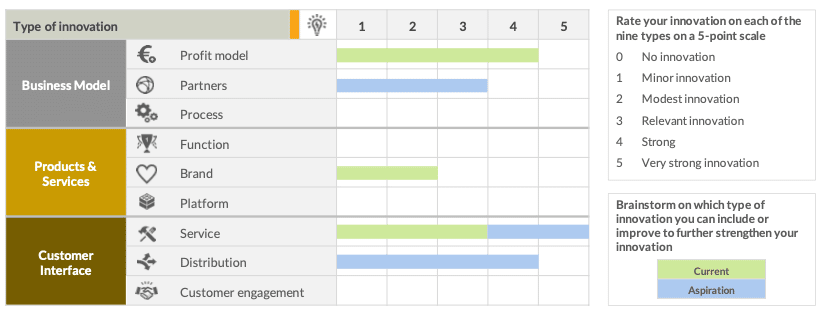
Innovation Opportunity Assessment
Assess the market attractiveness and the competitive edge of your innovation efforts to identify their viability and potential risks.
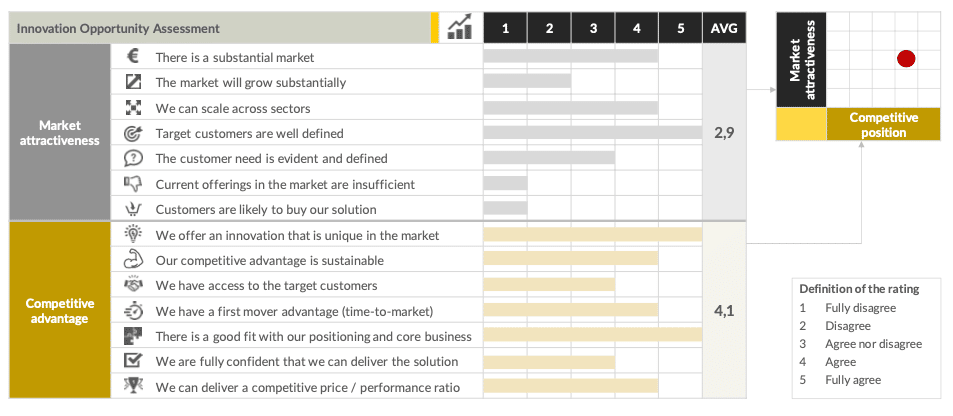
3 Innovation Horizons
Always be aware that your innovation ideas & projects cover all 3 horizons, not just one or two. Typically, in a 70% (Horizon 1), 20% (Horizon 2) and 10% (Horizon 3) distribution. Depending on your current position in the market.
Trigger questions:
- Do we have a good understanding of the horizon 2 and 3 innovations that can potentially change our industry?
- Which technology drivers are likely to drive horizon 2 and 3 innovation, and do we master these technologies?
- Do we have enough innovation on each of the horizons?
- Are we willing to place some horizon 3 bets?
- What are our competitors and potential new entrants doing in each horizon?
Balancing short and long term perspectives

Each horizon requires specific capabilities
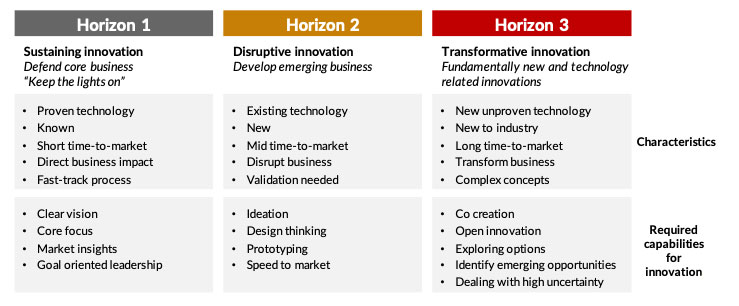
Defining your innovation opportunity, starting from the customer
Once you have your (short-listed and prioritized) list of ideas, it is time to define and document your innovation opportunity: what it is, for whom, how it generates value and what business model is required to sell and deliver.
4 steps to define your innovation opportunity:
- Define and understand your customer (groups). Use the Customer Persona Canvas. Develop a persona for each distinct type of customer.
- Map the customer journey and the entire experience for each persona, from start to end.
- Design your value proposition based on customer insights. Use the Value Proposition Canvas.
- Develop your business model to deliver that value proposition. Use the Business Model Canvas

Understanding your audience with customer personas
By defining customer personas, you will better understand your customer and tailor your value proposition and marketing strategy to their needs.
What is a Persona?
A Persona is a semi-fictional representation of your ideal customer based on market research and real data about your existing (or potential) customers.
Why use a Persona?
Personas provide structure and context for your company, making it easier to map out opportunities and allocate your team’s time and resources.
Depending on your business, you could have as few as one or two personas, or as many as 10 or 20. However, when starting out we advise to keep it simple and stick to a low number as a starting point.
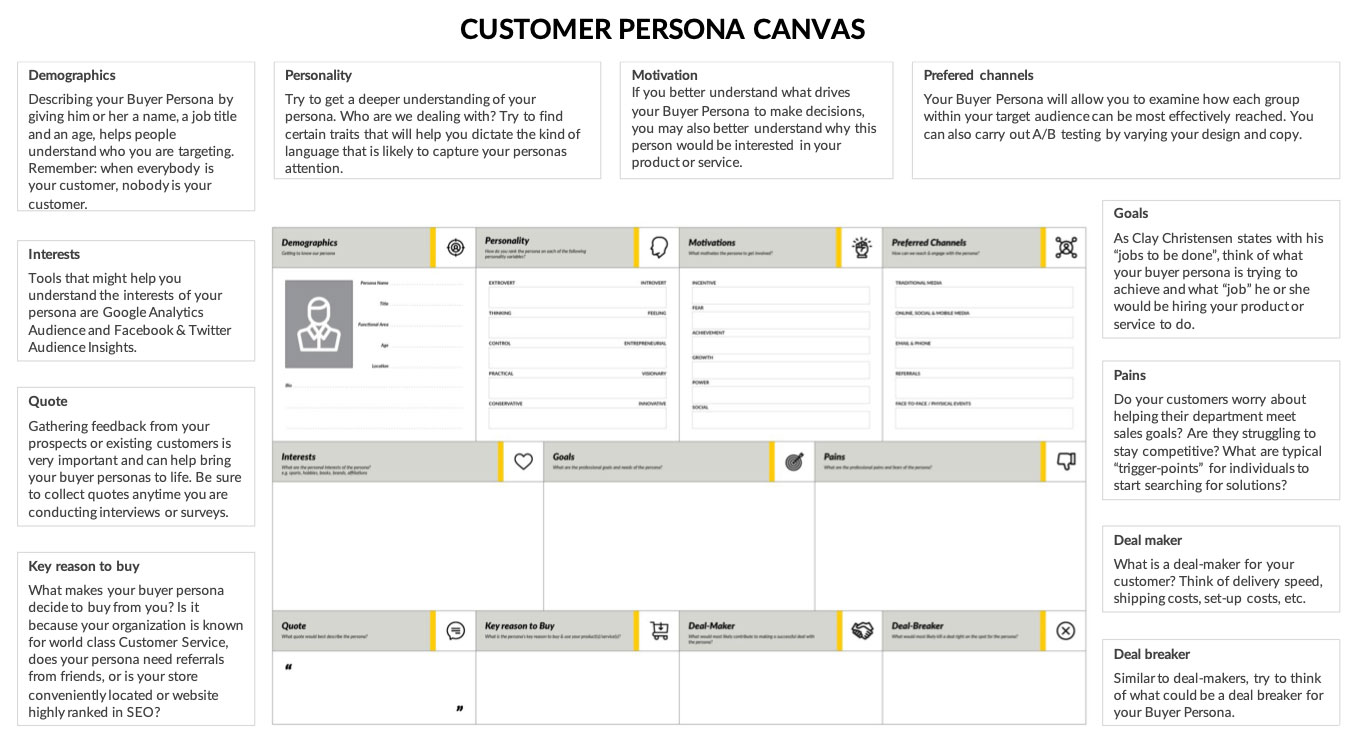
Mapping the customer journey from start to end
The Customer Journey Canvas enables you to map the entire customer journey from start to finish using three distinct sub-journeys: the search/orientation journey, the buy journey and the use/experience journey.
Using the Customer Journey Canvas
- Try to really put yourself in the shoes of one of your (potential) customers. What do they experience? When? What do they feel, hope and do?
- The first journey step will typically be the moment when your prospect first hears about you and the first action that he/she then takes. The last journey step will typically be about service and loyalty/advocacy.
- In the ‘Emotional Curve’ segment on the canvas, for each of the journey steps indicate whether your customer would likely be content/happy in that step, neutral/indifferent or sad/frustrated. Now draw a line between all these points to uncover the emotional curve.
- Use the ‘Potential Opportunities’ and ‘Ideas & Solutions’ segments on the canvas to harvest ideas to mitigate any bottlenecks or sub-optimal steps in the customer journey.
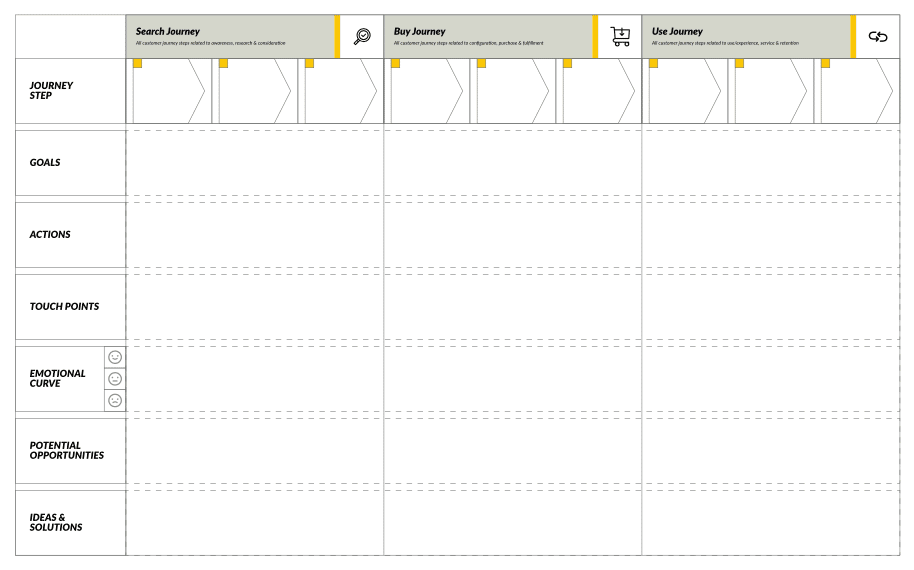
Designing the right value proposition for your target customer
Value proposition design leads to the definition of how to create value for your customer and with what products and services. It starts by identifying your customers, their ‘jobs to be done’ and the pains and gains that must be addressed for them.
Using the Value Proposition Canvas
- Make sure you have a good understanding of the customers you aim to target
- Think beyond the direct ‘jobs to be done’ – often this is defined at a higher level (e.g., providing a comfortable climate instead of installing an air conditioner)
- Use the pains and gains to design unique products and services creating value for your customer
- Think in terms of value that you deliver and not just activities that you execute or products your deliver
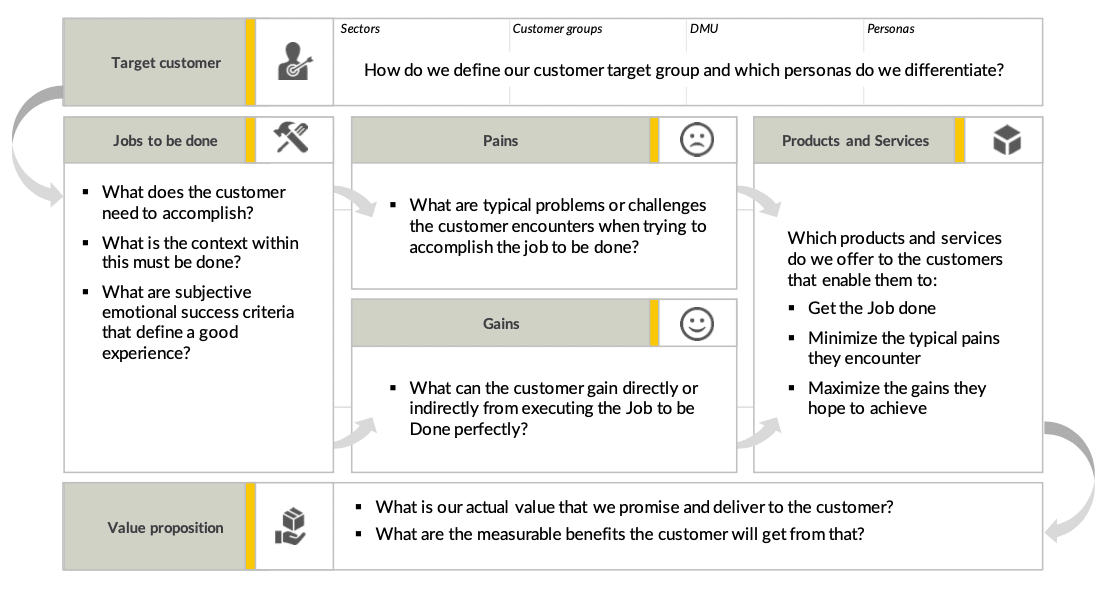
Designing a viable business model for your solution
The Business Model Canvas helps you to define what business model is needed to sell, deliver and monetize your solution.
Using the Business Model Canvas
- Start with identifying the customers that you want to create value for
- Use personas to better understand their needs and behavior
- Design a value proposition that addresses the ‘Jobs to be done’ (JTBD), pains and gains of your customer
- Tailor the channels and relations to the specific needs and behavior of each persona you want to target
- Apply as many of the 3×3 innovation types as you can when defining your business model; innovation is also about how you structure your business, your partner network and the unique resources and assets you have
- Make a careful make-or-buy assessment when defining the left side of the business model canvas; partnering can reduce risks and time to market
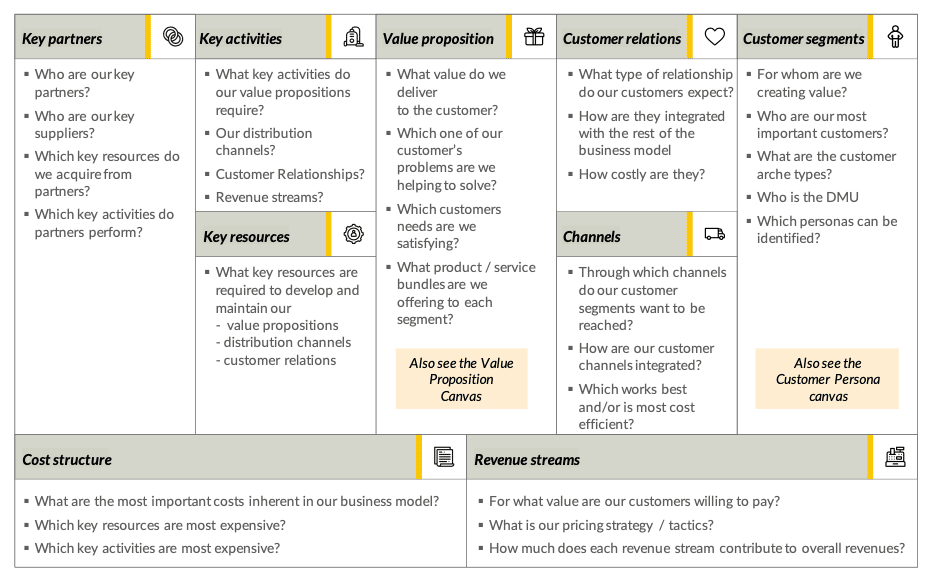
This is the third in a series of blogs on the RevelX Innovation Playbook where we demystify innovation and its challenges. It contains methods, tools, canvases and definitions any innovator needs to succeed.
Matthijs Rosman
Trusted and creative advisor. Specialist in growth acceleration and innovation. Combines analysis and creativity to develop surprising combinations. From new digital possibilities to ways to improve commercial results. Cordial towards others, sharp on details. Continuously looking for growth opportunities.
Related posts
How to Prevent Innovation Theatre
Learn how real innovation drives success and avoid the…
June 21, 2024
Corporate Innovation: A Catalyst for Success
In the dynamic and competitive business landscape,…
June 7, 2024
Stepping Through Your Stage Gates Like a Pro
Stages, stage gates and making stage gate decisions. This…
March 8, 2023
